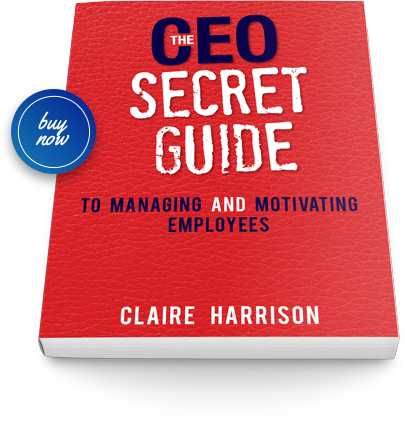The workplace is rapidly evolving, influenced by technology, new HR trends, global events, and changing employee and societal expectations. Keeping up requires innovation, foresight, and adaptability. Below are 50 strategies to ensure you not only attract and retain the best talent but also enhance productivity and alignment with organisational goals, even amidst challenges:
1. Foster a Strong Company Culture:
Core Values: Clearly define your company’s core values and communicate them at every opportunity. Employees want to work in places where they align with the company’s vision and values.
Open Communication: Encourage open dialogue between all levels. When employees feel their voices are heard, they are more engaged and motivated.
2. Offer Flexible Working Arrangements:
Remote work, flexible hours, and compressed workweeks are often as valued, if not more, than a higher salary. This not only attracts talent but can reduce operational costs like electricity and office space.
3. Invest in Professional Development:
Even with a small budget, there are plenty of online courses, workshops, and webinars available. Encouraging and facilitating continuous learning not only helps your employees grow but also benefits your business in the long run.
4. Recognise and Reward:
Simple recognition goes a long way. A personal note, a public shout-out, or even a small token of appreciation can have a significant impact. Recognising effort and achievements helps in boosting morale and motivation.
5. Create Opportunities for Internal Growth:
Give your employees a clear path of progression within the company. This not only ensures that they stick around but also guarantees that you have experienced and trained individuals ready to take on more significant roles when the time comes.
6. Build a Sense of Community:
Team-building activities don’t have to be extravagant. Regular team lunches, potlucks, or even virtual coffee breaks can foster camaraderie among team members.
7. Focus on Health and Well-being:
Prioritise employee well-being by offering inexpensive wellness programs, mental health support, or regular health check-ups. A healthy employee is generally a happy and more productive one.
8. Prioritise Feedback:
Regular feedback loops, both formal and informal, can help you identify areas of improvement in your strategy. Moreover, when employees are involved in the feedback process, they feel a greater sense of ownership and belonging.
9. Opt for Cost-Effective Recruitment Methods:
Leverage employee referrals or use free/low-cost job boards. Often, current employees can be your best brand ambassadors and help in bringing onboard like-minded individuals.
10. Embrace Diversity and Inclusion:
Diverse teams are known to be more innovative and effective. By promoting a culture of inclusion, you’re not only attracting a broader talent pool but also improving team dynamics and decision-making processes.
11. Digital Transformation:
Invest in HR tech tools that streamline recruitment, onboarding, and employee engagement, adapting to the digitized world.
12. Gig Economy Adaptability:
Be open to freelance and project-based roles.
13. Mental Health Focus:
In a post-pandemic world, mental health is paramount. Offer counselling (Employee Assistance Programs) and/or mental health days.
14. Financial Literacy Programs:
Equip employees to manage their finances, especially during economic challenges.
15. Mentorship Programs:
Link experienced professionals with newcomers for knowledge transfer.
16. Alumni Networks:
Former employees can be advocates, referring potential candidates or even returning.
17. Reverse Mentoring:
Younger employees teach senior staff about new technologies or trends.
18. Transparent Communication:
Especially during crises, clear communication builds trust.
19. Sustainable Practices:
Modern employees value eco-friendly workplaces. Go green where possible.
20. Parental Support:
Offer parental leaves and/or childcare facilities/support.
21. Data-Driven Decisions:
Use analytics in recruitment, engagement, and retention strategies.
22. Employee Autonomy:
Give employees freedom over how they accomplish tasks, encouraging creativity.
23. Talent Pools:
Maintain a database of potential candidates for future roles.
24. VR/AR in Training:
Use Virtual Reality or Augmented Reality for immersive training experiences.
25. Continuous Feedback:
Replace annual reviews with regular check-ins.
26. Cross-Functional Teams:
Encourage departments to collaborate, breaking silos.
27. AI in Recruitment:
Artificial Intelligence can streamline candidate searches and initial screenings.
28. Employer Branding:
Strengthen your brand as an employer, showcasing company culture.
29. Clear Mission Statements:
Employees want purpose. Ensure they know the company’s mission.
30. Safe Reporting Mechanisms:
Encourage reporting of issues without fear of retaliation.
31. Work-Life Integration:
Instead of balance, aim for an integration that respects both personal and professional time.
32. Reskilling Opportunities:
Offer courses that help employees pivot roles or adapt to industry changes.
33. Gamified Learning:
Make training interactive and engaging.
34. Comprehensive Benefits:
Beyond super, cars and health, consider benefits like student loan assistance or pet insurance.
35. Accessible Leadership:
Ensure leaders are approachable and present.
36. Transparency in Pay:
Discuss pay scales openly to avoid disparities and mistrust.
37. Inclusive Language:
Ensure all communications are inclusive, considering diverse audiences.
38. Career Path Transparency:
Show employees potential growth avenues.
39. Employee Resource Groups:
Groups centred around gender, race, or other identifiers provide support and networking.
40. Stay and Exit Interviews:
Gather insights on why employees stay and leave to improve retention.
41. Sabbaticals:
Offer extended breaks for long-serving employees.
42. Crisis Management Training:
Equip teams to handle unexpected challenges.
43. Holacracy:
Consider non-traditional organisational structures where roles, not job titles, define work.
44. Ethical Business Practices:
Modern employees respect and seek out ethically-run businesses.
45. Embrace Neurodiversity:
Recognise the strengths of those with neurological differences.
46. Customised Onboarding:
Tailor onboarding processes to individual roles and teams.
47. Continuous Market Analysis:
Stay updated with industry remuneration and benefits and adjust accordingly.
48. Employee Pulse Checks:
Regularly gauge employee sentiments and adapt strategies accordingly.
49. Celebrate Milestones:
Acknowledge both company and individual milestones.
50. Collaborative Goal Setting:
Involve employees in setting their goals, ensuring alignment with company objectives.
In an era of rapid technological and societal change, understanding emerging trends and adapting strategies is crucial. Implementing these 50 strategies, grounded in the evolving world of HR, will ensure your organisation not only attracts but also retains the crème de la crème of talent, driving it toward unparalleled success.
Call Harrisons, HR consultants, to discuss how these strategies could be prioritised and implemented in your organisation to transform the way you lead, motivate and retain your employees.
Claire Harrison is the Founder and Managing Director of Harrisons, a flourishing HR consulting business that sprouted in 2009 from Claire’s passionate belief that inspiring leaders and superstar employees are the key success factor to any business. With over 20 years’ experience, Claire has worked as a HR Director of multi-national organisations, as a Non-Executive Board Director, and a small business owner. Claire’s corporate career includes working with companies such as BHP, Westpac, Fonterra and Mayne Nickless.




